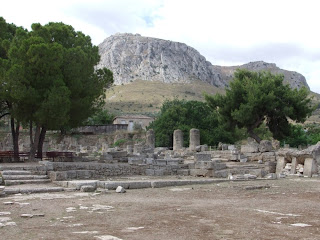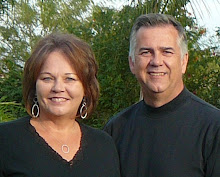Our first stop after leaving Athens was the Corinth Canal. The Romans in 60 AD, under Nero’s influence, began to dig this canal but no one completed it until the Greeks finished it in 1893. The canal is 600 meters long and the water is 8 meters deep. It connects the Aegean and Ionia Seas. An interesting thing at this site is that there is a bridge that drops down into the canal (in contrast to a draw bridge that opens upward) to allow large vessels to pass through the canal. As we walked over the bridge, looking down at the canal, we were surprised to connect with two couples from Sioux Falls who were travelling through Greece with the Augustana Alumni choir.
We then traveled to city of Corinth and walked through the ancient ruins where Paul stayed for a couple of years. We saw the Market Place, the Bema (where speakers stand to address their audience), the Temples and the stone path that the Apostle Paul walked in 52-53 AD. He wrote the book of Ephesians here. Later Paul would write the letters, 1 and 2 Corinthians, to the believers at Corinth to encourage them to grow in their faith and to warn them about pagan influences. Near the city is the big acropolis, Acrocorinth, on which was built the temple of Aphrodite with all of its pagan rituals. The Archaeological Museum contained many wonderful artifacts from that period of time. We saw the stone carved inscription that mentions Erastus.(Romans 16:23)
An earthquake had leveled everything
This is a part of a reconstructed temple
Corinthian marketplace where Paul walked and taught
The spring of water in Corinth
The temple to Aphrodite was located on
the Acrocorinth (the large hill)
Next we traveled to Mycenae where the remains of the ancient city date back to the Bronze Age. We saw the famous Lionesse Gate, climbed to the top of the citadel and went into the Tomb of Agamennon, which is in the shape of a Beehive.Tomb of Agamennon
From there we traveled 2 hours back to Athens.
The hills and valleys and mountains of Greece








No comments:
Post a Comment